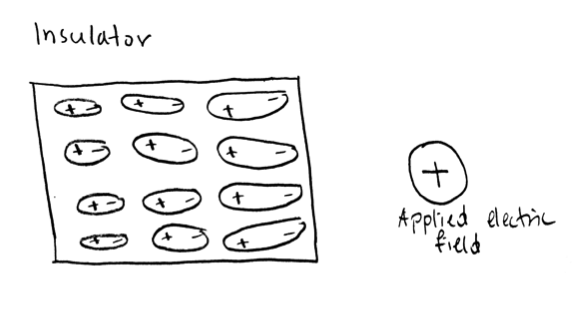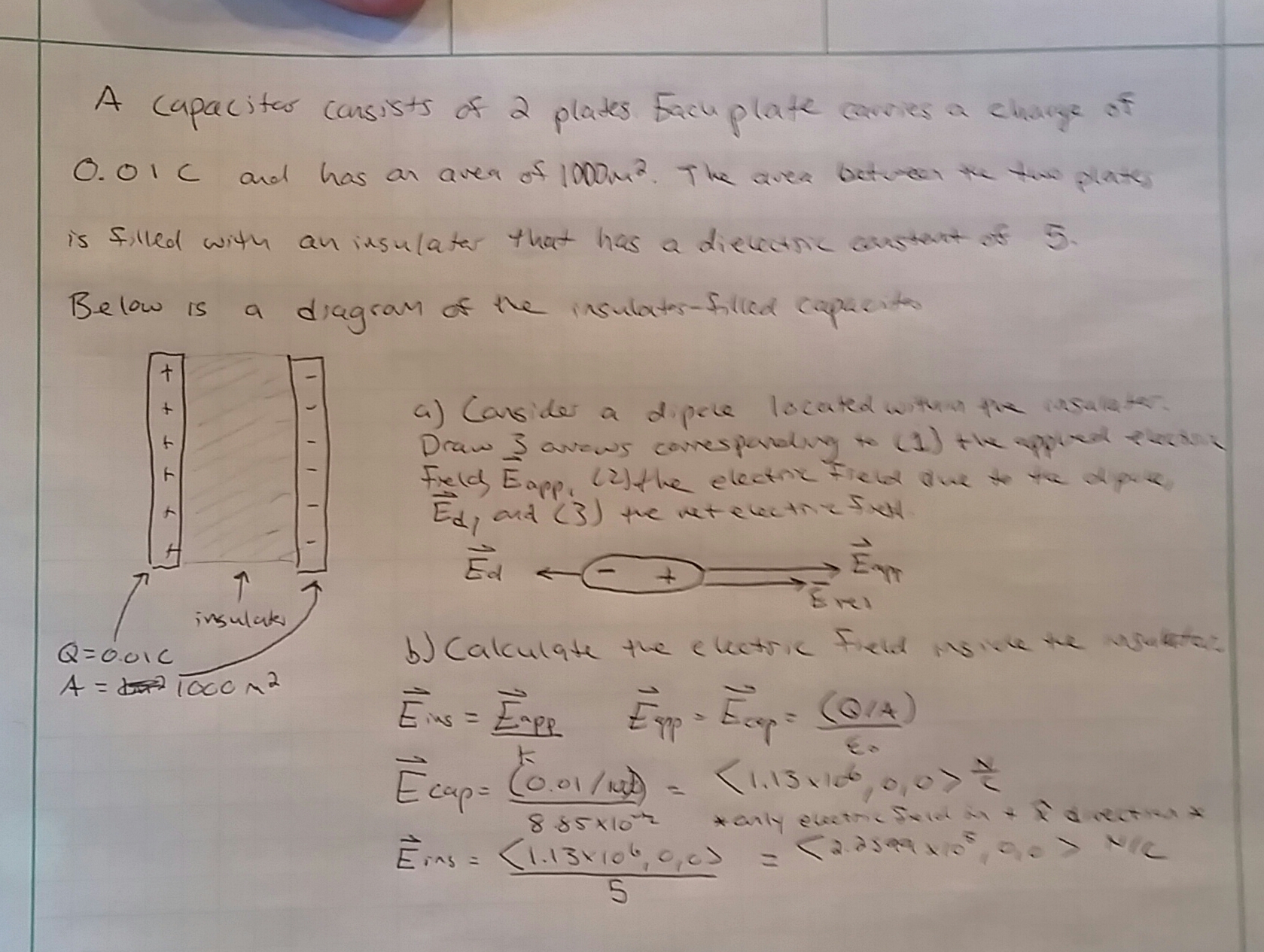Insulators: Difference between revisions
No edit summary |
No edit summary |
||
| Line 78: | Line 78: | ||
===Antennas=== | ===Antennas=== | ||
Broadcasting antennas are basically a giant high voltage structure, so they must be insulated from the ground and be protected against lightning. Usually cables are used to break up the voltage and to help prevent short circuiting. Ceramic insulators are commonly used. The insulator is under compression as opposed to the tension that is seen with powerlines. | Broadcasting antennas are basically a giant high voltage structure, so they must be insulated from the ground and be protected against lightning. Usually cables are used to break up the voltage and to help prevent short circuiting. Ceramic insulators are commonly used. The insulator is under compression as opposed to the tension that is seen with powerlines. | ||
== See also == | == See also == | ||
Revision as of 12:57, 7 April 2017
Edited by Raghav Srivastava and Dylan Chiodo on 4/17/16 , Edited by Zinka Bartolek Fall 2016, Edited by Garrett Gresham Spring 2017
Conductors have mobile charged particles that move that can move throughout the material.This is due to a mobile "sea" of charged particles that are not bound to the atoms in the material. Unlike in conductors, the charged particles in insulators are tightly bound to the atoms in the material. Because of this, there can be no charge movement which makes the flow of electric current through the material impossible. Freedom of mobile charges(electrons in metals) all has to due with the valence of electrons in the metal's outer orbitals. A material like copper with one free electron in its outer orbital is a great conductor whereas a material like rubber will not conduct electricity because the polymers it is made of do not have free, mobile electrons. This is why wires are insulated with rubber

The Main Idea
Insulators are a class of materials that will not allow current to flow under an applied electric field. When a charge such as an electron is put under an applied field, it will experience a force that causes it to move. Since there are no free mobile electrons in an insulator, no charges will move through the material. Although the electrons do not move through the material, an applied electric field will cause the molecules within an insulator to polarize.
How does one determine whether or not a material is going to be an insulator or a conductor? Much of this depends on material property known as conductivity. Conductivity describes how easy it is for electrons to flow through a material. It is a function of the charge of the mobile charge, the number of mobile charges in a material, and the mobility of the charges. On the contrary to conductivity is the property of resistivity which is equal to int inverse of conductivity. This property defines the difficulty of mobile charges to pass through a material. The higher the resistivity of the material, the better an insulator it is.
In the scope of this class, we focus on how insulators are effected by and effect an electric field. When an insulator is placed in an applied electric field, the molecules will polarize even though no charges flow. These polarized molecules are seen as dipoles which will align with the electric field with the positive ends facing in the direction of the field. These dipoles will then contribute their own, much weaker electric field in the opposite direction of the applied field which will make the net field inside the insulator weaker than the applied field. This is often seen when an insulator is in the gap of a capacitor.
Like many things in the real world – there is no such thing as a perfect insulator. A small number of charges will still be able to move, especially when a very high voltage is applied. Insulators are used in electrical equipment to separate conductors and as supports to keep current from flowing where it shouldn’t. In addition, air can be considered an insulator because, in practice, as long as two current carrying wires do not come in contact with one another, electrical current will not pass between them.
A Mathematical Model
Resistivity
Resistivity is the intrinsic property that quantifies how strongly a material opposes the flow of electric current. The units of resistivity are Ohms Meter, and the equation to solve for resistivity is:
[math]\displaystyle{ \rho = R \frac{A}{\ell}, \,\! }[/math] where R is resistance, [math]\displaystyle{ \ell }[/math] is the length of the material and A is the cross sectional area of the specimen.
To calculate resistivity, the size of the material is taken into account along with the resistance. Many objects can claim to have roughly the same resistance, but by taking into the specific dimensions of the material into account we find the resistivity, which is specific to each material. From the equation, it can be concluded that resistivity is an intrinsic property of a material, allowing it to be similar across all specimens of a material. For example, ceramic will have a much high electrical resistivity than copper, however, the resistivity of two ceramic specimens with same dimensions will be the same.
Band Theory
Electrons tend to seek the lowest energy state in their configuration, and the characteristic state, or band, at which the electrons of an element have filled up to is called the Fermi level. Only electrons near the Fermi level are allowed to "jump" to another atom, which is how the electron sea of metals works. Metals have many electrons near their Fermi levels, allowing them to have great conductivity as compared to other materials. The opposite is true for insulators. In an insulator the amount of electrons available for conduction is close to none, meaning a high voltage potential at one end of the insulator will cause little to no change in the electrical structure of the insulator.
Polarization of Insulators
In insulators, all charged particles are tightly bound to the molecules making up the material. When an electric field is applied, the charged particles (electrons) in an insulator shift position slightly but still stay bound to the molecules. The largest distance the charged particles can move is about one atomic diameter, which is 1xe-10 m. Because the mobile charge is displaced by such a small distance, the polarization happens very quickly. The whole process can generally take less than a nanosecond to complete.
The image bellow shows a solid block of insulating material whose molecules are polarized by an external electric field. The the example shown, the applied electric field is a single external positive charge. The electrons in each molecule are moved by a very short distance, however, the molecules themselves do not move. Polarized molecules align with the external electric field polarizing them. A stronger applied electric filed will cause a larger displacement of the electrons in the molecules. For example, the part of the insulator closer to external charge will have molecules that are more extended that the part of the insulator further away from the electric field.
Testing Resistivity
To test the resistivity of an insulator we need to look at the breakdown voltage. The breakdown voltage of an insulator is the minimum voltage required to make a portion of the insulator become conductive. This is done by creating a weakened path in the material – a permanent physical or molecular change to the material. Basically the voltage gives the electrons enough energy to be excited. Many will use this to test for the maximum amount of voltage a material can withstand prior to it completely collapsing.
Uses
Insulators are prominent when wires are going to be crossing and potentially touching. Because air is an insulator, wires that have no chance of crossing or touching another can potentially be left to be insulated by the air. When wires cross and touch, short circuiting is a very common problem and creates a fire hazard. With wires that are carrying very high voltages, electrocution becomes a concern. Because insulators do not allow current to flow, portions of the electrical wires can be wrapped in an insulator and touch other wires with no hazard. This is so important that there are government regulations on what kinds of insulated wire can be used in buildings.
The use of insulators also allows for the extension of the life of many wires as the material also shields wires (such as power lines) from natural elements that would wear and/or corrode the wires.
Examples
Simple
Material A has a conductivity of 200 while material B has a resistivity of 30. Which material is the better insulator?
Since resistivity is the inverse of conductivity, it is simple to see that Material B will be the better insulator.
Middling
You have two capacitors, one filled with insulator A and one filled with insulator B. Insulator A has a dielectric constant of 5 and insulator B has a dielectric constant of 10. Assuming both insulators have the same area and charge on their plates and the same distance between plates, which one would have the greater potential difference across it?
You can read more about potential differences here: Potential Difference. Since both capacitors have plates with the same charge and area, both will have the same applied electric field. The actual electric field inside capacitor A will be greater because it has a lower dielectric constant. Because of this, we will see a greater potential difference by a factor of 2 across capacitor A.
Difficult
Connectedness
Connection to Interests
This topic is very connected to my interests. I really enjoy learning about the physics and chemistry behind material properties. It amazes me to see how chemical properties such as the number of valence electrons in a material can have such a profound effect on a physical property like conductance.
Connection to Major
As a chemical engineer, the topic of insulators can be connected to my major. One of the industries I am considering working in is the materials industry. It is important to understand the chemistry behind a material so that you can know how that material will behave in certain applications.
Power lines
Typically these high voltage wires are insulated by air. Insulator materials are only used when the wires are connecting to a pole or support. Insulators are also required where these lines enter buildings and electrical centers. Ceramics (including glass), are the material of choice in building insulators for power lines, and they typically have an outer coat of gloss to prevent the buildup of condensation.
Antennas
Broadcasting antennas are basically a giant high voltage structure, so they must be insulated from the ground and be protected against lightning. Usually cables are used to break up the voltage and to help prevent short circuiting. Ceramic insulators are commonly used. The insulator is under compression as opposed to the tension that is seen with powerlines.
See also
References
Holtzhausen, J.P. "High Voltage Insulators" (PDF). IDC Technologies. Retrieved 2008-10-17.
Grigsby, Leonard L. (2001). The Electric Power Engineering Handbook. USA: CRC Press. ISBN 0-8493-8578-4
Bakshi, M (2007). Electrical Power Transmission and Distribution. Technical Publications. ISBN 978-81-8431-271-3.
http://www.allaboutcircuits.com/textbook/direct-current/chpt-12/insulator-breakdown-voltage/
http://www.engineeringtoolbox.com/resistivity-conductivity-d_418.html


